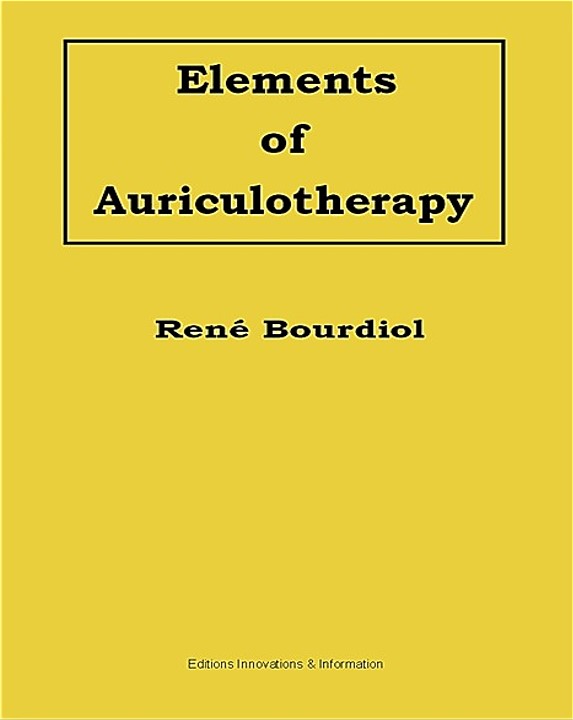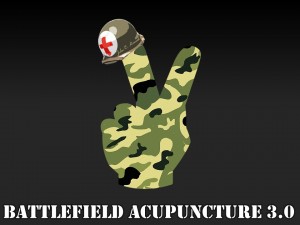FDA Medical Device Regulation and Informed Consent
John J. Smith, Mary E. Jensen, and Jacques E. Dion
New medical devices are subject to a regulatory
scheme designed to ensure safety and effectiveness
that is administered by the United States Food and
Drug Administration (FDA). Gaining approval to
market a device for a specific clinical indication may
be time-consuming and costly, particularly for one
that poses a potentially unreasonable risk of patient
injury and represents genuinely new medical technology.
The difficulty of gaining FDA approval has led to
the use of devices for indications other than those
approved by the FDA and to the clinical use of products
that lack any formal FDA appr1oval. Such non-
FDA approved uses raise the question of what patients
subjected to these products should be told as
part of the informed consent process.
FDA Medical Device Regulation
Current FDA regulation of medical devices is
based on the Food, Drug, and Cosmetic Act (FDCA)
as modified by the Medical Device Amendments of
1976 (MDA). The MDA substantially changed U.S.
device regulation, integrating many features that had
previously existed only in drug regulation. New devices
are generally subject to a premarket notification
system under section 510(k), requiring a manufacturer
or other sponsor to notify the agency of its
intention to market the product. After this notification,
the FDA must affirmatively grant permission for
marketing to proceed. Certain devices that pose a
potentially unreasonable risk of patient injury are also
subject to a premarket approval process, another established
drug regulation device that typically involves
clinical trials. The overall goal of this regulatory
scheme is to ensure that a marketed medical
device is safe and effective for the indications described
on its FDA-approved product label.
Enforcement of the FDCA is primarily the responsibility
of the FDA. The agency directs its enforcement
actions against parties who market products
that either lack any FDA approval or that are marketed
for an indication other than that approved by
the agency (so-called off-label use). Importantly, it is
a long-standing regulatory doctrine that a licensed
physician may use a legally marketed device for any
indication that he or she believes is appropriate, regardless
of whether that use is agency approved (1).
This “practice of medicine” doctrine recognizes that
the FDA regulates devices, not medical practice (2).
The agency can, however, regard the acquisition of a
device for a nonapproved indication as a marketing
activity and act against the physician who does so.
This concern notwithstanding, enforcement actions
stemming from the use of nonapproved devices are
primarily directed at manufacturers and other individuals
who actively market such products, not the
physicians who use them.
The heart of the device regulatory scheme is a
three-tiered classification system under which pre-
1976 products are classified by the risk they pose to
patients, with an increasing regulatory burden as the
device ascends in class.
Class I Devices.—These are products that do not
pose a potentially unreasonable risk of patient illness
or injury. Such products are regulated only via general
controls, such as general labeling requirements
and good manufacturing practices. These controls
apply to all class I devices as well as to devices of
classes II and III. The FDA does not assess these
products individually nor is there a requirement that
safety and effectiveness of the individual product be
established prior to marketing. Examples of products
in this category include tongue depressors and
crutches.
Class II Devices.—These present a greater risk of
harm than do class I devices and are subject to additional
regulation in the form of special controls, which
may be established by the FDA. Although regulation
may be more stringent than with class I devices, there
is no individual FDA evaluation of these products.
Generally, this class includes higher-technology products
that do not by themselves maintain life, such as
cardiac monitors, tampons, and oxygen masks.
Class III Devices.—These are “represented to be
for use in supporting or sustaining human life or for a
use which is of substantial importance in preventing
impairment of human health,” or that “present a
potentially unreasonable risk of illness or injury” (3).
Technically, all products in this class are subject to a
premarket approval process, which requires that a
manufacturer establish the safety and efficacy of the
device prior to its marketing. Pre-1976 class III devices,
however, are “grandfathered” and may continue
to be legally marketed until the FDA requests
safety and efficacy data and the manufacturer fails to
provide it, or the supplied data fail to demonstrate
safety and efficacy. Products substantially equivalent
to pre-1976 class III devices also enjoy this regulatory
reprieve. Class III includes implantable devices, such
Address reprint requests to John J. Smith, Department of Radiology, Massachusetts General Hospital, 55 Fruit St, Boston, MA 02114.
© American Society of Neuroradiology
Commentary
1815
as stents and heart valves, as well as products used
within the body, such as angioplasty catheters and
coils for embolization.
Devices developed after 1976 are split into two
groups, those that are substantially equivalent to pre-
1976 devices and those that are genuinely new products.
A party seeking to market a new device must
generally notify the FDA of its intention to do so
under the MDA’s premarket notification system, often
referred to as 510(k), the statutory section outlining
the requirement. Should the FDA determine that
a device is substantially equivalent to a pre-1976 device
or represents an evolutionary change of such a
device, that device is classed with its pre-1976 equivalent
and may be marketed subject to the same regulatory
standards applied to the existing product.
Thus, substantially equivalent devices do not escape
regulation, but they are only subject to the regulation
faced by their pre-1976 predecessor.
Genuinely new devices developed after 1976, which
by definition have no pre-1976 equivalent, are automatically
considered class III devices. Technically, the
FDCA does allow reclassification to class I or class II
in certain instances, although this does not apply to
any device whose potential risk to patients would
place it in class III (3). Practically speaking, this reclassification
provision is rarely, if ever, used with
potentially high-risk products. Accordingly, any such
genuinely new device is subject to a formal premarket
approval process. This process requires reasonable
assurance that the device is safe and effective for its
intended use. Safety and efficacy are generally established
via clinical trials that focus on specific clinical
applications.
The device regulatory scheme has important implications,
particularly for genuinely new medical products
developed after 1976 that carry a degree of patient
risk, which places them in class III. These
devices are automatically subject to the premarket
approval process prior to any legal marketing. The
clinical trials that underlie this process are often involved,
time-consuming, and costly, and typically yield
approval for only a single clinical application. The
cost alone may be sufficient to prevent a manufacturer
or other sponsor from pursuing marketing of
the product. The time involved in conducting clinical
trials also makes it difficult for FDA approval to
reflect the latest medical developments. Furthermore,
the practice of medicine doctrine, which allows physicians
to use an approved device in any manner they
see fit, may dissuade the sponsor of an already approved
product from seeking formal FDA approval
for additional clinical indications.
In practice, the new device regulatory system has
produced a climate in which cutting-edge technology
frequently lacks FDA approval for any indication or
for the indication for which the technology is being
used. Physicians, particularly those in procedurebased
specialties, are often faced with clinical circumstances
in which a reasonable course of treatment
involves use of a non-FDA approved device. These
clinical demands are widely believed to have led to
significant use of non-FDA approved devices, which
raises the question of what patients should be told
regarding the regulatory status of devices used in
their care.
Informed Consent and Non-FDA
Approved Devices
It is well established that competent adults have the
legal right to control their medical care, a concept
embodied in the doctrine of informed consent. In the
context of non-FDA approved medical devices, the
question becomes whether the regulatory status of
those devices must be regularly included in the consent
process.
Basic Concept of Informed Consent
The adequacy of any informed consent is dependent
on state law. The majority of states employ a
reasonable practitioner standard to assess the consent
process, a standard that asks what a reasonable practitioner
would have disclosed to the patient in similar
circumstances. This standard is generally established
by physicians testifying as experts. A growing minority
of states use a reasonable patient standard, which
focuses on what information a reasonable patient in
like circumstances would need to know to make an
informed decision. The latter standard is generally
considered more demanding, as it effectively takes
the act of establishing the standard from the physician
and places it with the jury or judge. Importantly,
neither standard demands that all known information
on a procedure be revealed to the patient.
In addition to legally adequate consent, a plaintiff
must also show at trial that the inadequate consent
led to injury and to actual damages. In practice, this
means that informed consent is usually only an issue
when there has been an unfavorable outcome for the
patient.
Case Law: Informed Consent and Non-FDA
Approved Devices
We are unaware of any major reported cases involving
informed consent and non-FDA approved
devices used in radiology. An analogy, however, may
be drawn to ongoing litigation involving pedicle
screws, which are orthopedic devices commonly used
in spinal fixation. In the mid-1980s, these products
were twice submitted to the FDA under section
510(k) for use as spinal fixation devices. Twice the
application was refused, with the agency on at least
one occasion citing potential safety problems (4). The
manufacturer subsequently resubmitted a 510(k) application
that labeled the devices generic bone screws,
substantially equivalent to existing devices. With this
generic labeling, the FDA found the product was
substantially equivalent and sanctioned its marketing.
Despite the lack of specific FDA approval for spinal
use, the screws were commonly used off-label for
spinal fixation (5). A considerable number of patients
1816 SMITH AJNR: 19, November 1998
unsatisfied with their results filed suit, often claiming
that they were never informed of the device’s regulatory
status.
A federal class action suit addressing pedicle screws
is being litigated in the Federal District Court for the
Eastern District of Pennsylvania (In re Orthopedic
Bone Screw Products Liability Litigation). As part of
this litigation, the court examined the informed consent
issue. In doing so, it applied Pennsylvania law,
which follows a reasonable patient standard: a provider
must inform a patient of “those risks which a
reasonable man would have considered material to
his decision whether or not to undergo medical treatment”
(6). The court noted that FDA regulatory
status does not speak directly to the medical issues
surrounding a particular procedure. It dismissed extensive
FDA informed consent requirements for clinical
device trials as a regulatory consequence of being
engaged in clinical trials, not a part of the basic
doctrine of informed consent. Finally, the court observed
that off-label use of a medical device is a
matter of medical judgment on the part of a physician,
adding that a physician cannot be held liable for
failing to advise a patient as to the regulatory status of
a device. In conclusion, the court found that Pennsylvania
law did not require that the FDA status of a
device be revealed as part of the informed consent
process.
Two years earlier, however, the same Federal District
Court, again applying Pennsylvania law, suggested
a different result in the case of a patient who
underwent a diskectomy and fusion with pedicle
screws, a procedure later shown to be medically unnecessary
(7). While not rendering a final judgment
on the facts of the case, Corrigan v Methodist Hospital
held that use of a non-FDA approved device may
represent a risk that should be addressed in the informed
consent process. Notably, the court (In re
Orthopedic Bone Screw Products Liability Litigation)
specifically disagreed with this result.
Other courts are also split on this issue. In Klein v
Biscup, the pedicle screws were implanted into a patient
without any mention of their regulatory status.
Here, an Ohio court held that the FDCA does not
regulate medicine, and that once a product has been
approved for marketing it may be used by a physician
in a manner that differs from its approved use (8).
Faced with a similar situation, a Tennessee court in
Shadrick v Centennial Medical Center held that disclosure
of a device’s regulatory status is a question of
fact to be decided by a jury (9). The latter case was
decided in a jurisdiction that uses the majority reasonable
practitioner standard.
Analysis: Informed Consent and Non-FDA
Approved Devices
The cases cited above demonstrate the legal uncertainty
that currently surrounds informed consent and
non-FDA approved devices. Although In re Orthopedic
Bone Screw Products Liability Litigation appears to
represent the view of most courts that the regulatory
status of devices is not material to the informed consent
process, the outcome in any given case is likely to
be dependent on the particular facts before the court.
Such case-specific factors may include the regulatory
status of the device (ie, approved for another indication
or lacking any approval), the clinical indication in
question, and support in the medical literature for the
nonapproved use. The number of factors and their
complex interaction make the outcome in any given
case, whether in a reasonable provider or a reasonable
patient jurisdiction, difficult to predict.
Conclusion
The FDCA, as modified by the MDA, has created
a comprehensive system for the regulation of medical
devices to ensure their safety and effectiveness. An
unintended consequence of the system appears to be
the use of non-FDA approved devices in clinical practice.
Where such devices are employed, it is uncertain
what a patient should be told as part of the informed
consent process. Given this uncertainty, a prudent
approach may be to consider informing the patient of
the regulatory status of a device. This is particularly
true when a device lacks any FDA approval. Such an
approach may serve to prospectively address a potential
legal pitfall in the clinical use of such devices.
References
- Food and Drug Administration. 1991 Food and Drug Administration
Compliance Program Guidance Manual, No. 7382.900
- Preamble to the Final Rules Regarding New Drug, Antibiotic, and
Biologic Drug Regulations, 52. Federal Register 1987:8803
- Food and Drug Administration. Food, Drug, and Cosmetic Act.
Section 513(C)
- Monsein LH. Primer on medical device regulation part II: regulation
of medical devices by the U.S. Food and Drug Administration.
Radiology 1997;205:10–18
- Weiser B, Schwartz J. Simple apparatus tangled in dispute—approval
of medical device brings process into question. Washington
Post, March 29, 1996:A1
- Edwards CC, Garfin SR, Melkerson MN, Mishra NK, Winter RB,
Yuan HA. Symposium. Lumbar spine fixation: the pedicle screw
controversy. Contemp Orthop 1994;29:439–454
- In re Orthopedic Bone Screw Products Liability Litigation. 1996 WL
107556 (E.D. Pa.)
- 1994 WL 686626 (E.D. Pa.)
- 1996 WL 65826 (Ohio App. 8 Dist.)




